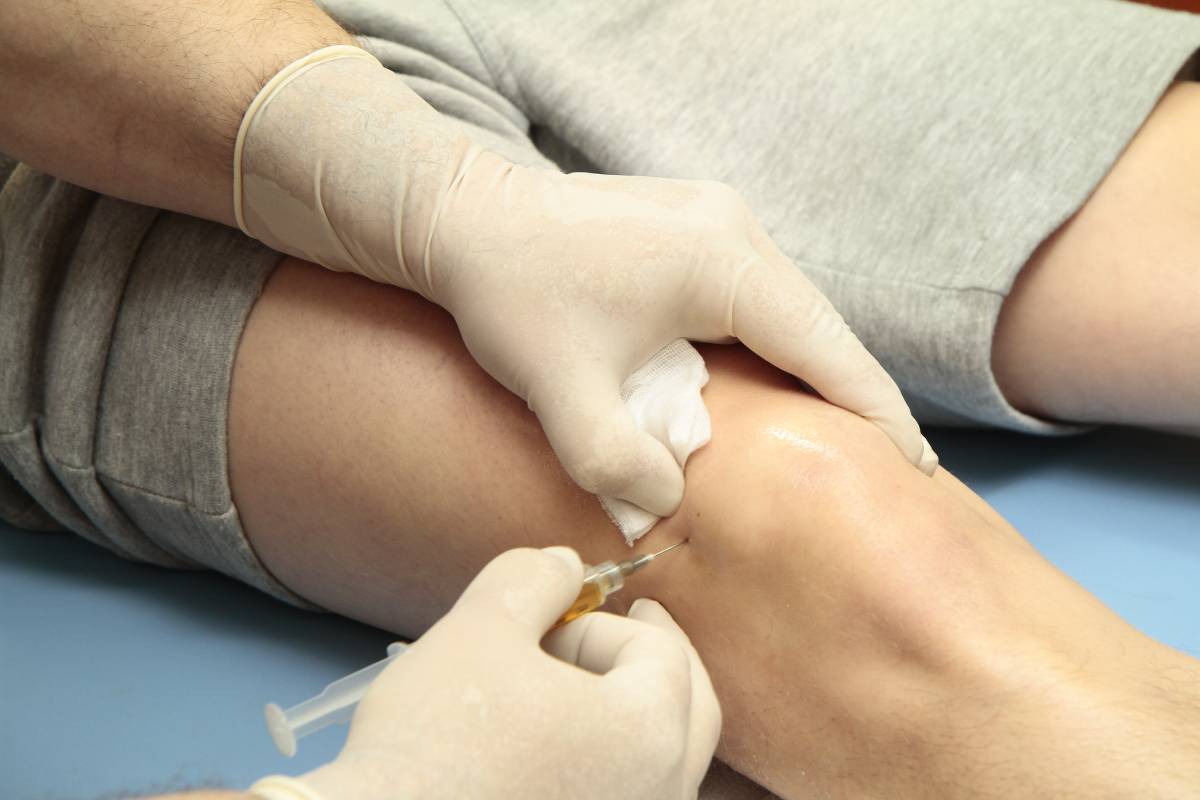Overview of Popliteal Nerve Blocks
March 4, 2024
Popliteal sciatic nerve blocks (PNBs) are a minimally invasive procedure with fewer side effects than moderate sedation or general anesthesia [1]. They are a crucial component in many surgical and pain management strategies, offering precise pain relief for procedures on the lower limbs [2]. PNBs may be used alone or with a femoral or saphenous nerve block [3]. Popliteal nerve blocks work by blocking pain signals before they reach the brain, leading to better postoperative pain control and higher patient satisfaction [4]. The duration of the blockade, which can last hours or months, depends on the specific medication and technique employed. However, the patient’s response to the medication and the specific surgical procedure can also influence the duration [5].
The process involves injecting local anesthetic directly to the sciatic nerve and its branches, the tibial and common peroneal (or fibular) nerves [3]. The injection is performed while the patient is in a supine position resting their foot on an elevated footrest [6]. This targeted approach confines effects to the distal extremities [3]. In addition, PNBs have the added benefit of reducing the need for opioid painkillers, lowering the risk of opioid-related complications [2]. However, the effectiveness and length of the pain relief can change based on the anesthetic used, the approach taken, and individual differences, like how fast a patient metabolizes the anesthetic [7]. Knowing these factors helps customize pain management to each patient’s needs.
Popliteal nerve blocks are often carried out using ultrasound imaging, either with or without a nerve stimulator [8]. Ultrasound-guided PNBs allow anesthesiologists to accurately locate anatomical landmarks, which, in turn, reduces the amount of local anesthetic required and the risk of complications such as nerve injury or unintentional vascular puncture [2]. The reported incidence of neurological damage after popliteal block injection ranges from 0–0.7% [9]. Although rare, such damage typically results in localized weakness and numbness below the knee or at the injection site, which may last for an extended period, as well as infection and hematomas [2]. Studies suggest that nerve trauma from PNBs may be due to a neurotoxic component that arises from the injection of local anesthetics into the nerve fibers [10].
Popliteal nerve blocks are common operative and postoperative analgesia for knee, ankle, and foot procedures [8]. They offer a less invasive way to manage pain, shorten hospital stays, and increase patient satisfaction [11]. The continued improvement of PNB techniques, especially with ultrasound, has made them safer and more precise, securing their place as a vital part of modern anesthesia and pain management [5]. In addition, they are beneficial for patients with a history of drug abuse and peripheral neuropathy [2] As PNBs research evolves, it will further ensure patient safety and satisfaction. The continuous evolution of techniques, especially ultrasound guidance, promises to enhance their efficacy and minimize risks.
References
- Brull, R., Perlas, A., & Chan, V. W. S. (2007). Ultrasound-guided peripheral nerve blockade. Current Pain and Headache Reports, 11(1), 25–32. https://doi.org/10.1007/s11916-007-0018-6
- Jogie, J., & Jogie, J. A. (2023). A comprehensive review on the efficacy of nerve blocks in reducing postoperative anesthetic and analgesic requirements. Cureus, 15(5), e38552. https://doi.org/10.7759/cureus.38552
- Kuijpers, Y. A. M., Setz, J. M., & Khemlani-Houthoff, K. (2021). Axonal injury with persistent neuropathy following popliteal nerve block for cheilectomy surgery. Case Reports in Anesthesiology, 2021, 9942195. https://doi.org/10.1155/2021/9942195
- Layana Vieira Nobre, G., Prianti Cunha, G., Castello Branco de Sousa, P. C., Takeda, A., & Cunha Ferraro, L. H. (2019). Peripheral nerve block and rebound pain: Literature review. Brazilian Journal of Anesthesiology (English Edition), 69(6), 587-593. https://doi.org/10.1016/j.bjane.2019.10.009
- Lützner, J., Gehring, R., & Beyer, F. (2020). Slightly better pain relief but more frequently motor blockade with combined nerve block analgesia compared to continuous intraarticular analgesia after total knee arthroplasty. Knee Surgery, Sports Traumatology, Arthroscopy: Official Journal of the ESSKA, 28(4), 1169–1176. https://doi.org/10.1007/s00167-019-05843-2
- Noikham, A., Tivirach, W., Pongraweewan, O., Suphathamwit, A., Puangpunngam, N., & Jirativanont, T. (2023). Popliteal sciatic nerve block for high-risk patients undergoing lower limb angioplasty: A prospective double-blinded randomized controlled trial. Medicine, 102(18), e33690. https://doi.org/10.1097/MD.0000000000033690
- O’Flaherty, D., McCartney, C. J. L., & Ng, S. C. (2018). Nerve injury after peripheral nerve blockade-current understanding and guidelines. BJA Education, 18(12), 384–390. https://doi.org/10.1016/j.bjae.2018.09.004
- Reinbacher, P., Schittek, G. A., Draschl, A., Hecker, A., Leithner, A., Klim, S. M., Brunnader, K., Koutp, A., Hauer, G., & Sadoghi, P. (2023). Local periarticular infiltration with dexmedetomidine results in superior patient well-being after total knee arthroplasty compared with peripheral nerve blocks: A randomized controlled clinical trial with a follow-up of two years. Journal of Clinical Medicine, 12(15), 5088. https://doi.org/10.3390/jcm12155088
- Wiederhold, B. D., Garmon, E. H., Peterson, E., et al. (2024). Nerve block anesthesia. In StatPearls [Internet]. Treasure Island (FL): StatPearls Publishing. https://www.ncbi.nlm.nih.gov/books/NBK431109/
- Young, A., Robinson, R., Nguyen, E., Stewart, E., Lin, A. L., Locke, M., & Hurrell, R. (2022). Impact of local anesthesia block on pain medication use and length of hospital stay in elderly indigenous patients in Alaska hospitalized for fragility fracture. OTA International: The Open Access Journal of Orthopaedic Trauma, 5(4), e207. https://doi.org/10.1097/OI9.0000000000000207